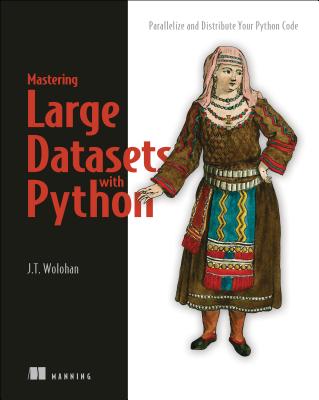Stats: Data & Models, 5/e (Paperback)
暫譯: 統計學:數據與模型,第5版(平裝本)
Richard D. De Veaux , Paul F. Velleman , David E. Bock
- 出版商: Pearson FT Press
- 出版日期: 2021-01-01
- 定價: $1,360
- 售價: 9.8 折 $1,333
- 語言: 英文
- 頁數: 1024
- ISBN: 1292362219
- ISBN-13: 9781292362212
下單後立即進貨 (約5~7天)
相關主題
商品描述
●Random Matters, a new feature, encourages a gradual, cumulative understanding of randomness. Random Matters boxes in each chapter foster inferential thinking through a variety of methods, such as drawing histograms of sample means, introducing the thinking involved in permutation tests, and encouraging judgement about how likely the observed statistic seems when viewed against the simulated sampling distribution of the null hypothesis.
●Streamlined coverage of descriptive statistics helps students progress more quickly through the first part of the book. Random variables and probability distributions are now covered later in the text to allow for more time to be spent on the more critical statistical concepts, as per GAISE recommendations.
●Introduction of a third variable in calculations, with the discussion of contingency tables and mosaic plots, in Chapter 3 gives students early experience with multivariable thinking
商品描述(中文翻譯)
●隨機事務(Random Matters)是一個新功能,鼓勵對隨機性的逐步累積理解。每章中的隨機事務框框透過各種方法促進推論思維,例如繪製樣本均值的直方圖、介紹排列檢定中的思考過程,以及鼓勵對觀察到的統計數據在與虛無假設的模擬抽樣分佈相比時的可能性進行判斷。
●簡化的描述性統計(descriptive statistics)涵蓋幫助學生更快地進入書籍的前半部分。隨機變數(random variables)和機率分佈(probability distributions)現在在文本中稍後介紹,以便根據GAISE的建議,能花更多時間在更關鍵的統計概念上。
●在計算中引入第三個變數(third variable),在第三章中討論列聯表(contingency tables)和馬賽克圖(mosaic plots),讓學生早期體驗多變量思維。
作者簡介
Richard De Veaux- Williams College
Paul Velleman- Cornell University (Emeritus)
David E. Bock - Cornell University, Ithaca High School (Retired)
作者簡介(中文翻譯)
理查德·德·維奧 - 威廉斯學院
保羅·維勒曼 - 康奈爾大學(名譽教授)
大衛·E·博克 - 康奈爾大學,伊薩卡高中(退休)
目錄大綱
Part I: Exploring and Understanding Data
1. Stats Starts Here
2. Displaying and Describing Data
3. Relationships Between Categorical Variables—Contingency Tables
4. Understanding and Comparing Distributions
5. The Standard Deviation as a Ruler and the Normal Model
Part II: Exploring Relationships Between Variables
6. Scatterplots, Association, and Correlation
7. Linear Regression
8. Regression Wisdom
9. Multiple Regression
Part III: Gathering Data
10. Sample Surveys
11. Experiments and Observational Studies
Part IV: Randomness and Probability
12. From Randomness to Probability
13. Probability Rules!
14. Random Variables
15. Probability Models
Part V: Inference for One Parameter
16. Sampling Distribution Models and Confidence Intervals for Proportions
17. Confidence Intervals for Means
18. Testing Hypotheses
19. More About Tests and Intervals
Part VI: Inference for Relationships
20. Comparing Groups
21. Paired Samples and Blocks
22. Comparing Counts
23. Inferences for Regression
Part VII: Inference When Variables Are Related
24. Multiple Regression Wisdom
25. Analysis of Variance
26. Multifactor Analysis of Variance
27. Introduction to Statistical Learning and Data Science
目錄大綱(中文翻譯)
Part I: Exploring and Understanding Data
1. Stats Starts Here
2. Displaying and Describing Data
3. Relationships Between Categorical Variables—Contingency Tables
4. Understanding and Comparing Distributions
5. The Standard Deviation as a Ruler and the Normal Model
Part II: Exploring Relationships Between Variables
6. Scatterplots, Association, and Correlation
7. Linear Regression
8. Regression Wisdom
9. Multiple Regression
Part III: Gathering Data
10. Sample Surveys
11. Experiments and Observational Studies
Part IV: Randomness and Probability
12. From Randomness to Probability
13. Probability Rules!
14. Random Variables
15. Probability Models
Part V: Inference for One Parameter
16. Sampling Distribution Models and Confidence Intervals for Proportions
17. Confidence Intervals for Means
18. Testing Hypotheses
19. More About Tests and Intervals
Part VI: Inference for Relationships
20. Comparing Groups
21. Paired Samples and Blocks
22. Comparing Counts
23. Inferences for Regression
Part VII: Inference When Variables Are Related
24. Multiple Regression Wisdom
25. Analysis of Variance
26. Multifactor Analysis of Variance
27. Introduction to Statistical Learning and Data Science
















